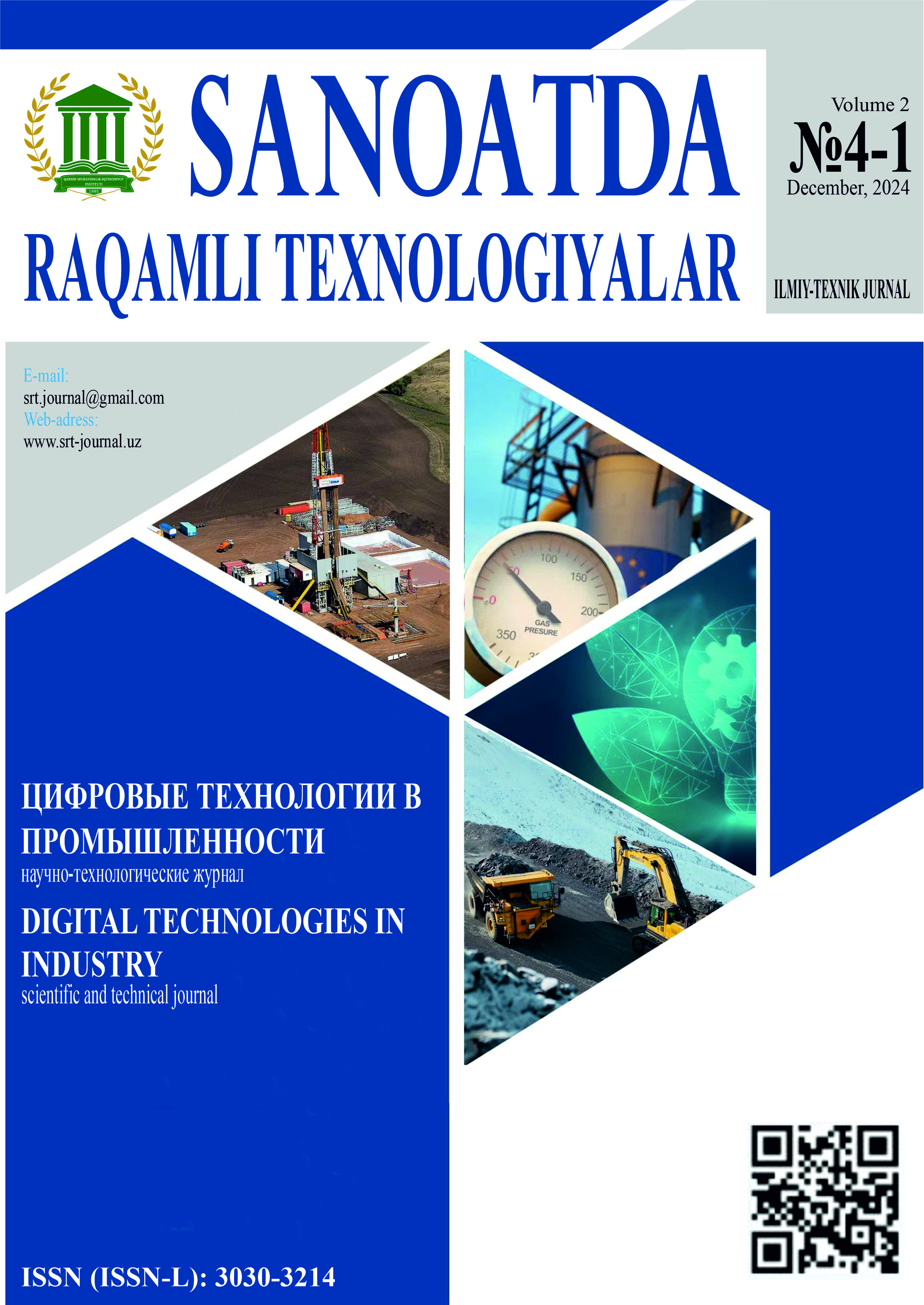RESEARCH ON TECHNOLOGICAL METHODS AND EFFICIENCY OF DEEP ENRICHMENT OF TUNGSTEN FROM TECHNOGENIC WASTE
Main Article Content
Abstract
The technology of extracting tungsten from technogenic waste is complex due to the presence of impurities such as iron, bismuth, and other minerals, which complicate the beneficiation process. This article explores the efficiency of the deep flotation method for tungsten extraction from technogenic waste. Research findings indicate that deep flotation is inefficient from both a technological and economic perspective. Challenges arose in selectively separating impurities during flotation, resulting in a lower-than-expected yield of tungsten. Therefore, the article suggests an alternative approach—a combination of gravity and flotation methods. This combined approach allows for effective management of impurities in technogenic waste, achieving high tungsten extraction efficiency and ensuring the environmental safety of the process.
Downloads
Article Details
Section

This work is licensed under a Creative Commons Attribution 4.0 International License.
Public License Terms
(For Open Journal Systems (OJS))
-
Copyright:
The copyright of the published article remains with the author(s). However, after publication, the article is distributed on the OJS platform under the Creative Commons (CC BY) license. -
License Type:
This article is distributed under the Creative Commons Attribution 4.0 International (CC BY 4.0) license. This means users can utilize the article under the following conditions:- Copy and distribute: The text of the article or its parts can be freely distributed.
- Quote and analyze: Parts of the article can be used for quoting and analysis.
- Free use: The article can be freely used for research and educational purposes.
- Attribution: Users must provide proper attribution and reference to the original source.
-
Commercial use:
The article can be used for commercial purposes, provided that authorship and source are properly cited. -
Document modification:
The text or content of the article can be modified or adapted, as long as it does not harm the authorship. -
Liability disclaimer:
The author(s) are responsible for the accuracy of the information contained in the article. The editorial team of the platform is not liable for any damages resulting from the use of this information. -
Public usage obligations:
The content of the article must be used only in accordance with legal and ethical standards. Unauthorized use is strictly prohibited.
Note:
These license terms are designed to ensure transparency and openness in material usage. By accepting these terms, you agree to the adaptation and distribution of the article content under the terms of the Creative Commons license.
Link: Creative Commons Attribution 4.0 International (CC BY 4.0)
How to Cite
References
1. Изоитко В.М., Петров С.В. Особенности геолого-технологической оценки вольфрамовых руд разных промышленно-генетических типов. Переработка комплексных вольфрамовых руд, вольфрамомолибденовых руд и продуктов обогащения / Междувед. сб. научных трудов «Механобр». Л.: 1989. С.4-16.
2. Михайлов, А.Н. “Техногенные отходы и их переработка: теория и практика.” СПб.: Лань, 2012.
3. Хасанов, А.А., Туробов, Ш.Н., Боймуродов, Н.А., Хужакулов, А.М. (2024) СОВРЕМЕННЫЕ МЕТОДЫ ОБОГАЩЕНИЯ ВОЛЬФРАМОВЫХ РУД ДЛЯ ПОВЫШЕНИЯ ЭФФЕКТИВНОСТИ ДОБЫЧИ. Universum: технические науки, 10(127). URL: https://7universum.com/ru/tech/archive/item/18317
4. Пирматов, Э. А., Шодиев, А. Н. У., & Боймуродов, Н. А. (2023). ИЗУЧЕНИЕ РАСТВОРИМЫХ ФОРМ ВОЛЬФРАМА И УСЛОВИЙ КРИСТАЛЛИЗАЦИИ ШЕЕЛИТА И ВОЛЬФРАМИТА. Universum: технические науки, (11-2 (116)), 15-19.
5. Murodovich, X. J. A., & Abduqodirovich, B. N. (2024). OʻZBEKISTONDA VOLFARAM MINERAL XOM ASHYO BAZASI VA UNING ASOSIY MUAMMOLARI. Sanoatda raqamli texnologiyalar/Цифровые технологии в промышленности, 2(1), 40-45.
6. Шодиев, А., Боймуродов, Н., Хужакулов, А., Равшанов, А., & Нарзуллаев, М. (2024). ИССЛЕДОВАНИЕ И ОБОСНОВАНИЕ ТЕХНОЛОГИИ ПОЛУЧЕНИЯ ПОЛУФАБРИКАТОВ И ВОЛЬФРАМА В МЕТАЛЛИЧЕСКОМ ВИДЕ ИЗ ПРОМЫШЛЕННЫХ ОТХОДОВ. Молодые ученые, 2(1), 107-112.
7. Shodiev, A., Boymurodov, N., & Ravshanov, A. (2023). STUDY OF THE TECHNOLOGY FOR EXTRACTING TUNGSTEN IN THE FORM OF A SEMI-FINISHED PRODUCT AND METALLIC FORM FROM INDUSTRIAL WASTE. Sanoatda raqamli texnologiyalar/Цифровые технологии в промышленности, 1(2), 87-91.

